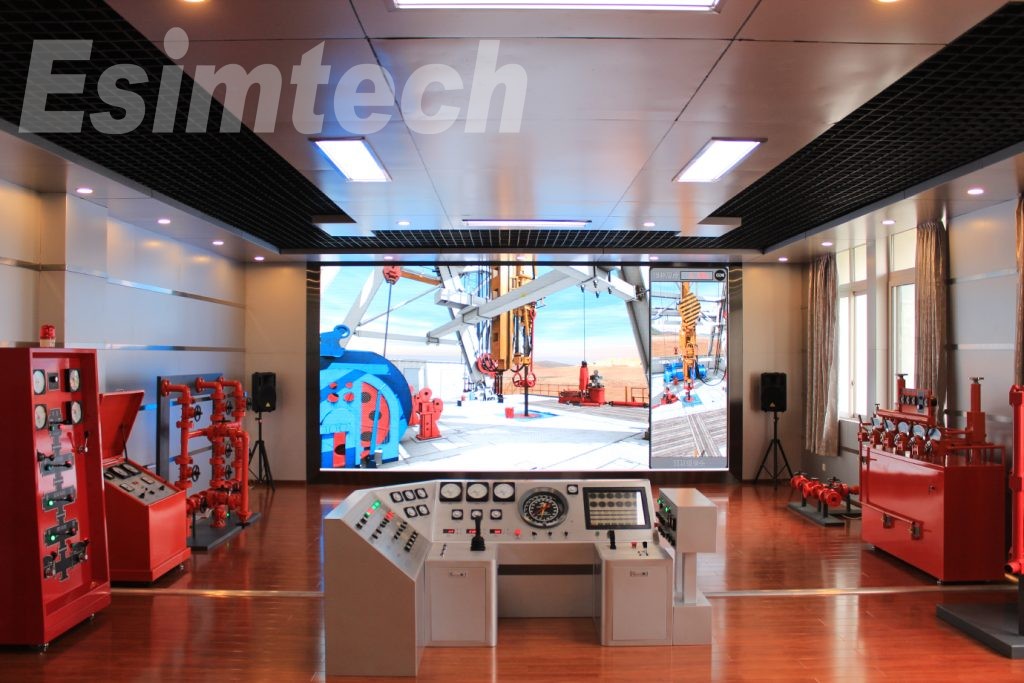Managing oil and gas involves a vast range of activities, from exploration and extraction to transportation and distribution. In this article, we will delve into the complexities of oil and gas management, analyzing its essential components, challenges, the evolving landscape of this critical sector, and how simulation is revolutionizing oil and gas management.

Key Aspects of Oil and Gas Management
Exploration and Production
The first phase of oil and gas management is exploration and production (E&P). These processes involve locating potential hydrocarbon reserves, drilling wells, and extracting crude oil and natural gas. Geologists, engineers, and other professionals play a crucial role in identifying viable drilling locations. Advanced technologies, such as seismic surveys and sophisticated drilling techniques, have revolutionized E&P, enabling more precise identification of hydrocarbon reservoirs.
Challenges in Exploration and Production
Environmental Concerns: Balancing the demand for energy resources with environmental conservation is a significant challenge. The industry must minimize the environmental impact of drilling and extraction processes.
Technological Advancements: Keeping up with rapidly evolving drilling and exploration technologies is crucial for the industry’s competitiveness.
Geopolitical Issues: Oil and gas reserves are often located in politically sensitive regions, which can lead to geopolitical challenges and supply disruptions.
Refining and Processing
After crude oil and natural gas are recovered, they must be refined and processed to be used in various applications. Refineries play a critical role in this phase by converting crude oil into valuable products like gasoline, diesel, and petrochemicals. To maintain efficiency and product quality, the refining process requires innovative equipment and skilled workers.
Challenges in Refining and Processing
Environmental Regulations: Cleaner and more efficient refining procedures are necessary as environmental regulations become increasingly stringent.
Energy Efficiency: Refineries must enhance their energy efficiency to minimize carbon emissions and operational costs.
Supply Chain Management: Managing the supply chain is vital to ensure a steady flow of crude oil and products to meet market demand.
Transportation and Distribution
Transportation and distribution of oil and gas products involve moving them from refineries to end users, typically via pipelines, ships, trucks, and railroads. Effective logistics and infrastructure are essential for ensuring a steady and secure supply of energy resources.
Challenges in Transportation and Distribution
Infrastructure Investment: Maintaining and expanding transportation infrastructure requires significant investment and is a constant challenge.
Safety and Security: Ensuring the safe transport of hazardous materials is a top priority for the industry.
Market Fluctuations: Oil and gas prices can fluctuate significantly, affecting transportation and distribution decisions.
Environmental and Regulatory Compliance
Compliance with environmental and regulatory requirements is a critical aspect of oil and gas management. The sector faces increasing scrutiny and pressure to reduce its environmental impact. Compliance with environmental regulations is essential for maintaining a social license to operate and avoiding potential legal and reputational risks.
Challenges in Environmental and Regulatory Compliance
Shifting Regulations: Regulatory requirements are constantly evolving, necessitating adaptability and proactive compliance strategies.
Public Perception: Maintaining a positive public image is challenging in an industry often viewed with skepticism due to environmental concerns.
Health and Safety: Ensuring the health and safety of workers and communities is a top priority and a constant challenge in the oil and gas sector.
Technology and Innovation
Technology and innovation are driving forces in the oil and gas industry. Advances in drilling techniques, automation, data analytics, and renewable energy are transforming the industry. To remain competitive and sustainable, oil and gas management must embrace and adapt to technological advances.
Challenges in Technology and Innovation
Talent Acquisition: Attracting and retaining skilled personnel to drive innovation is a continuous challenge.
Energy Transition: As the world shifts towards cleaner energy sources, oil and gas management faces the challenge of diversifying and adapting to meet changing energy demands.
How Simulation Technology is Revolutionizing Oil and Gas Management
Simulation technology is helping the oil and gas industry simulate and analyze various aspects of their operations, from exploration and production to refining and distribution.
Exploration and Reservoir Simulation
Reservoir modeling is a critical application of simulation technology in the oil and gas sector. Geologists and engineers use this technology to create computer models of subsurface reservoirs, providing a detailed understanding of the reservoir’s characteristics. Simulations allow experts to predict reservoir performance under different conditions, optimizing drilling and production strategies.
Benefits of Reservoir Simulation
Improved Reservoir Management: Simulations enhance reservoir characterization, leading to better production techniques and higher recovery rates.
Risk Mitigation: Companies can anticipate potential issues and manage risks by modeling various production scenarios.
Cost Reduction: Simulation technology helps reduce drilling and exploration costs by providing insights for more efficient well placement and operation.
Drilling and Well Control Simulation
Drilling and well control also benefit from simulation technology. Drilling simulators offer operators a realistic training environment to practice various drilling scenarios and well control procedures safely. These simulations help improve the skills and preparedness of drilling personnel.

Benefits of Drilling Simulation
Enhanced Training: Drilling simulation systems provide a safe and cost-effective way to train operators and improve their ability to manage drilling operations.
Error Prevention: Simulations enable the practice of well control responses, reducing the likelihood of human error during actual drilling operations.
Realistic Scenarios: Operators can encounter a wide range of drilling challenges, from equipment failures to unexpected wellbore conditions, in a controlled environment.
Refinery and Process Optimization
Refineries and processing plants use simulation technology for process optimization. By creating digital replicas of refinery operations, companies can identify inefficiencies, reduce energy consumption, and improve product quality. These simulations enable engineers to experiment with different process variables and make informed decisions to enhance plant operations.
Benefits of Refinery Simulation
Efficiency Gains: Simulations help identify opportunities to streamline operations, reduce energy consumption, and increase overall process efficiency.
Product Quality: Companies can produce higher-quality products while reducing waste and emissions by fine-tuning refining processes.
Cost Savings: Optimizing processes through simulation can lead to significant cost savings in energy, maintenance, and raw materials.
Pipeline and Distribution Management
In pipeline and distribution management, oil and gas gathering and transportation simulation systems are used. Pipeline simulation software allows companies to analyze variables like flow rates, pressure, and temperature to ensure the safe and efficient transport of hydrocarbons from refineries to end users.

Benefits of Pipeline Simulation
Safety Assurance: Pipeline simulations help identify potential issues and ensure safe and reliable transportation of hazardous materials.
Resource Optimization: Companies can minimize energy consumption and maintenance costs by optimizing pipeline operations.
Compliance Support: Simulation technology assists in meeting regulatory requirements for pipeline operations and environmental protection.
Conclusion
Oil and gas management is a complex and multifaceted field vital to our daily lives and the global economy. Effective management in this industry requires addressing a wide range of issues, from environmental concerns to geopolitical challenges. As the world continues to evolve, oil and gas management must adapt and innovate to ensure a sustainable and reliable energy future. Simulation technology is a crucial tool for ensuring the industry’s long-term viability and dependability, enabling companies to navigate the complex landscape of this vital sector with confidence and precision.

